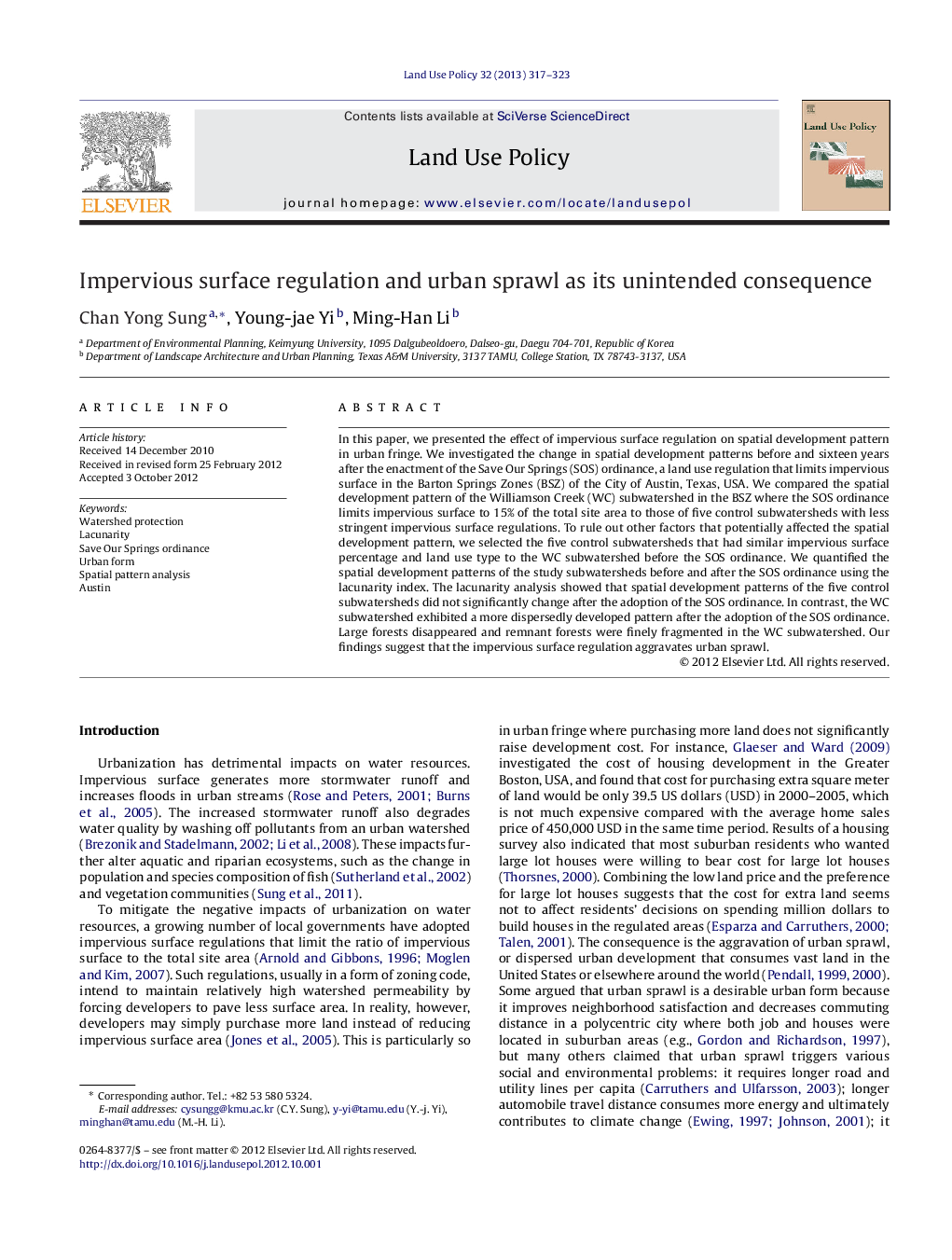| Article ID | Journal | Published Year | Pages | File Type |
|---|---|---|---|---|
| 93268 | Land Use Policy | 2013 | 7 Pages |
In this paper, we presented the effect of impervious surface regulation on spatial development pattern in urban fringe. We investigated the change in spatial development patterns before and sixteen years after the enactment of the Save Our Springs (SOS) ordinance, a land use regulation that limits impervious surface in the Barton Springs Zones (BSZ) of the City of Austin, Texas, USA. We compared the spatial development pattern of the Williamson Creek (WC) subwatershed in the BSZ where the SOS ordinance limits impervious surface to 15% of the total site area to those of five control subwatersheds with less stringent impervious surface regulations. To rule out other factors that potentially affected the spatial development pattern, we selected the five control subwatersheds that had similar impervious surface percentage and land use type to the WC subwatershed before the SOS ordinance. We quantified the spatial development patterns of the study subwatersheds before and after the SOS ordinance using the lacunarity index. The lacunarity analysis showed that spatial development patterns of the five control subwatersheds did not significantly change after the adoption of the SOS ordinance. In contrast, the WC subwatershed exhibited a more dispersedly developed pattern after the adoption of the SOS ordinance. Large forests disappeared and remnant forests were finely fragmented in the WC subwatershed. Our findings suggest that the impervious surface regulation aggravates urban sprawl.
► We examined the effect of impervious surface regulation on spatial development pattern. ► We quantified spatial development pattern using lacunarity analysis. ► After adopting the impervious surface regulation, forest patches were fragmented. ► The impervious surface regulation aggravated urban sprawl in urban fringe.
